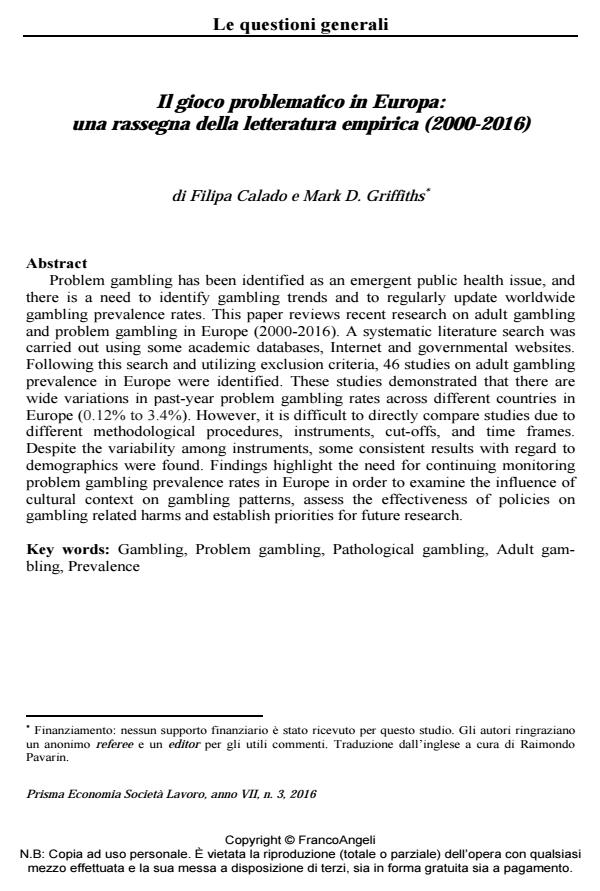Il gioco problematico in Europa: una rassegna della letteratura empirica (2000-2016)
Journal title PRISMA Economia - Società - Lavoro
Author/s Filipa Calado, Mark D. Griffiths
Publishing Year 2018 Issue 2016/3
Language Italian Pages 41 P. 41-81 File size 372 KB
DOI 10.3280/PRI2016-003004
DOI is like a bar code for intellectual property: to have more infomation
click here
Below, you can see the article first page
If you want to buy this article in PDF format, you can do it, following the instructions to buy download credits

FrancoAngeli is member of Publishers International Linking Association, Inc (PILA), a not-for-profit association which run the CrossRef service enabling links to and from online scholarly content.
Problem gambling has been identified as an emergent public health issue, and there is a need to identify gambling trends and to regularly update worldwide gambling prevalence rates. This paper reviews recent research on adult gambling and problem gambling in Europe (2000-2016). A systematic literature search was carried out using some academic databases, Internet and governmental websites. Following this search and utilizing exclusion criteria, 46 studies on adult gambling prevalence in Europe were identified. These studies demonstrated that there are wide variations in past-year problem gambling rates across different countries in Europe (0.12% to 3.4%). However, it is difficult to directly compare studies due to different methodological procedures, instruments, cut-offs, and time frames. Despite the variability among instruments, some consistent results with regard to demographics were found. Findings highlight the need for continuing monitoring problem gambling prevalence rates in Europe in order to examine the influence of cultural context on gambling patterns, assess the effectiveness of policies on gambling related harms and establish priorities for future research.
Keywords: Gambling, Problem gambling, Pathological gambling, Adult gambling, Prevalence
Filipa Calado, Mark D. Griffiths, Il gioco problematico in Europa: una rassegna della letteratura empirica (2000-2016) in "PRISMA Economia - Società - Lavoro" 3/2016, pp 41-81, DOI: 10.3280/PRI2016-003004